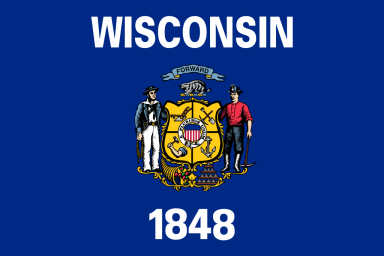North Dakota Medical Malpractice Laws

Among all the states in the U.S., North Dakota had the fewest medical malpractice payouts from 2012 to 2022, with only 102 reported payments.
However, in a 2023 Scorecard by the Commonwealth Fund, North Dakota only ranked 30th among the U.S. states for healthcare prevention and treatment and gained an overall ranking of 28 for its health system performance.
The unfortunate truth is that malpractice is a possibility even for those seeking medical care; thus, you or your family members can still fall victim to these kinds of accidents while receiving treatment in North Dakota.
If you or your loved ones were injured due to a healthcare provider’s negligence, this article will explain the important aspects of proving a medical malpractice case along with the claims process.
What Qualifies as Medical Malpractice in North Dakota?
A medical malpractice case occurs in North Dakota if a healthcare provider fails to render treatment that does not follow the required standard of care, leading to the patient’s harm. This case is also associated with incidents where the healthcare provider neglects to tend to the patient’s situation, which causes or worsens their injury.
It might be confusing to determine if medical negligence or medical malpractice are the same in North Dakota. As the two terms are interchangeable, their meanings can point to two different situations.
Medical negligence is the act the healthcare provider commits while treating a patient. If this negligence causes a patient’s injury enough to alter their daily lives, it is considered medical malpractice and carries legal consequences.
Common examples of medical malpractice cases include surgical or medication errors, birth injuries, failure to obtain informed consent, or missed or delayed diagnosis.
Who Can You Sue for Medical Malpractice in North Dakota?
Medical malpractice cases are most commonly linked to doctors who made an error during treatment. As such, one might assume that only doctors can be held liable for such cases. This misconception can lead to patients failing to seek compensation for their injuries just because they were not treated by a doctor but by a healthcare provider from a different field.
To clear up the faulty assumption in this matter, all healthcare providers are subject to and can be held liable for medical malpractice as long as it is proven that their actions have caused the patient’s injuries.
These providers can be doctors, dentists, nurses, medical technologists, physicians, surgeons, and others. In addition to licensed professionals, you can also file a medical malpractice lawsuit against hospitals, clinics, or nursing homes.
Exemptions
Although it has been established from the section above that all healthcare providers can be held liable for medical malpractice, just like any law, some exemptions apply to this case.
Sovereign Immunity
In North Dakota, the state government is immune to financial and legal responsibilities related to injury cases, such as medical malpractice. However, plaintiffs must note that this immunity only applies to the state government and does not include small entities.
As such, political subdivisions in North Dakota can still be held liable for medical malpractice lawsuits, although there’s a limit to how much a plaintiff can sue them for, which is $1 million per claim and $375,000 per person.
It is also crucial to remember that these political subdivisions will only be held liable for your medical malpractice case if one of their employees, such as a state physician, caused your injury or you were harmed while using their provided facilities.
Good Samaritan Law
Individuals who offered medical aid to those who were injured will be exempt from being held liable for the patient’s injuries as long as they acted in good faith and did not intend to harm the patient further.
This Good Samaritan Act was enacted by North Dakota as a legal protection in hopes of encouraging individuals to help and assist others in need of medical aid without fear of facing legal responsibilities.
Medical Malpractice Liability Insurance Requirements
North Dakota is among the states in the U.S. that do not require its healthcare providers to carry medical malpractice insurance. However, many practitioners still feel the need to purchase this coverage to protect themselves from possible claims.
Although there is no federal requirement to do so, medical facilities in North Dakota often require their providers to have medical malpractice coverage. Most of the time, this type of coverage is already included in the company’s policy once a healthcare professional starts working for them, but sometimes providers need to purchase them separately.
What Is the Statute of Limitations in North Dakota for Medical Malpractice Cases?
Medical malpractice victims in North Dakota have two years to file a lawsuit against their healthcare provider, be it a doctor, physician, or hospital. This statute applies to the date when the plaintiff discovered the injury. The same deadline applies to cases where the victim passed away due to the incident.
There are also special considerations for people considered legally insane and for those who are serving time in prison. In these cases, the plaintiff will be given one year to file a claim right after their disability has been addressed or after they are released from prison.
In addition, if you can prove that the injury was fraudulently concealed from you by your healthcare provider, an exemption to the statute of limitations will be granted to your case for no more than six years. For minor plaintiffs, the filing deadline will be extended to 12 years.
In cases where you are filing a tort claim against the state, you will be given three years to do so. Take note that before submitting the claim, you must present a written notice to the Director of the Office of Management and Budget within 180 days.
What Do You Need to Prove in a North Dakota Medical Malpractice Case?
Like various legal cases, medical malpractice lawsuits are often difficult to prove, especially since they cover complex issues in healthcare.
As a common procedure, plaintiffs in North Dakota need to present four aspects of causation to prove their claim. The first factor should be that there was a patient and doctor relationship; as such, the patient was owed a certain duty of care.
Following this aspect is that the healthcare provider breached the said duty of care by providing substandard services or even acted in neglect or without exercising caution.
The third aspect that the plaintiff needs to prove, which is one of the most complex factors, is that they sustained injuries as a result of the healthcare provider breaching that duty.
Finally, the last aspect is that the plaintiff had to suffer both economic and non-economic damages because of the injury they sustained.
Proving these aspects is not easy, especially if you are representing yourself in court. This is why working with a local attorney can help you thoroughly understand the claims process and make sure that your rights are being upheld throughout the procedure.
Expert Witness
Within three months of filing a medical malpractice lawsuit in North Dakota, they will be requested to bring forward an expert witness. The state does not have a long list of requirements to qualify as a witness, as long as this individual is in the same line of profession as the defendant.
The primary role of an expert witness in your case is to testify in court to prove that the healthcare provider or the defendant is indeed responsible for your injuries by breaching the standard of care. This may include cases where the plaintiff has to prove that there was a lack of informed consent during the medical treatment, the healthcare provider executed the procedure on the wrong patient, or the provider failed to remove a foreign object from the plaintiff’s body after surgery.
In most situations, the expert witness does not need to appear in court to testify. An alternative to this is to have the plaintiff submit an expert affidavit to the court, which is a document signed by the expert witness.
This document will include:
The expert’s name and proof of experience in giving expert medical opinion;
The medical opinion’s summary;
Proof or belief that the defendant breached their duty of care and that this action caused the plaintiff’s injuries.
Having either this document or the witness’ in-person testimony is necessary for the claim to not be dismissed by the North Dakota court.
Apology Laws in North Dakota
North Dakota is among the many states that abide by apology laws. This means that if a medical provider expresses concern, apology, or regret towards a patient, their words and actions cannot be used against them as evidence in court.
However, there are two types of apology laws: full and partial. North Dakota follows the partial apology law; as such, even if the healthcare provider expressed their apologies to the patient, if it means that they admitted fault along the way, these actions will be used as evidence against them in court.
How Much Can You Sue For Medical Malpractice in North Dakota?
Recovering monetary compensation for their injuries is one of the primary goals for filing a medical malpractice lawsuit in North Dakota, other than seeking justice for their injury and holding the negligent party liable for their actions.
Just like any type of legal case, medical malpractice claims base their settlement amount on the type and extent of damage the plaintiff sustained.
Types of Damages
Compensatory damages are divided into two categories in North Dakota: economic and non-economic damages. The table below will further explain the difference between the two categories.
Is There a Limit to How Much You Can Claim For a Medical Malpractice Lawsuit in North Dakota?
These types of limitations are most commonly known as damage caps, and in North Dakota, there is no limit to how much a plaintiff can receive for economic damages. However, there are caps on how much a plaintiff can claim for non-economic damages, which is $500,000 for their injuries.
Negligence System
North Dakota abides by the modified comparative negligence law when it comes to medical malpractice cases. This doctrine states that if a patient in the state is more than 50% at fault for the injuries they sustained, they are barred from suing their healthcare provider for compensation.
However, this does not mean that if you were partly at fault, specifically 49% or less, you would not be able to sue. If this is the situation, you will still be allowed to file a case, but take note that the percent of your fault will be deducted from the monetary compensation that you ought to receive from the defendant.
Moreover, North Dakota does not consider several or joint defendants in one medical malpractice lawsuit. In cases where numerous healthcare providers are involved in a plaintiff’s injury, each defendant will be held liable for their share of the injury and will pay the compensation accordingly.
Methods of Obtaining Compensation
Medical malpractice attorneys in North Dakota often aim to settle these types of cases through negotiation and arbitration. These procedures are likely the easier path, but they can sometimes be disadvantageous to the plaintiff as they feel like their rights have not been properly exercised.
As such, these cases are often brought up to court where the plaintiff and defendant can both state their respective arguments. The process also allows the plaintiff to strengthen their claim by working with an attorney who has a previous record of handling such complex cases and seeking the medical opinion of an expert witness.
Through the court process, the plaintiff’s attorney can negotiate a possibly higher compensation amount on behalf of them while putting their rights and best interests up front. Having your case undergo through court trial will also give you an opportunity to appeal your claim in the event that the final verdict does not meet your expectations.
How Much Does It Cost to Pursue a Medical Malpractice Case in North Dakota?
There is no telling the exact amount a plaintiff needs to proceed with their medical malpractice case in North Dakota. The fees associated with the filing process can be calculated based on numerous factors, such as court filing and attorney fees.
In North Dakota, most medical malpractice attorneys work on a contingency basis, which means that you are not obligated to pay them until they successfully litigate your case and recover monetary compensation in the process.
Most contingency fee arrangements are initiated with a written agreement, so it is important for you to thoroughly assess any document presented by your attorney. Although it is not specifically stated for North Dakota, most contingency fees in the U.S. amount to 40% of the plaintiff’s compensation award.
However, in cases where the court determines that the plaintiff’s case was frivolous, or that it is entirely without merit or lacks any basis, the court will order the plaintiff to pay a reasonable amount of the defendant’s attorney fees in case they successfully defend their claim.
Legal Resources for Medical Malpractice Victims in North Dakota
Legal Services of North Dakota
Legal Services of North Dakota offers free legal services to low-income and elderly people in the state who are facing civil cases, such as medical malpractice. LSND’s mission is to protect and enhance its residents’ civil legal rights and increase the education of community members. It has conducted other projects for people in need of pro bono help, such as trial representation, client counseling, litigation, and mentoring volunteer law students or lawyers.
Dakota Plains Legal Services
Dakota Plains Legal Services is a nonprofit organization dedicated to providing legal assistance to people who belong to low-income communities, as well as veterans and elderly people. Its services cover health law, with a subsection on medical malpractice claims. Its members also represent individuals facing issues related to family, housing, and income maintenance laws. DPLS serves both North and South Dakota. It continuously operates through the funds received from the Legal Services Corporation.
State Bar Association of North Dakota Lawyer Referral Service
The Lawyer Referral Service of the State Bar Association of North Dakota helps individuals connect to legal professionals who have experience handling cases such as medical malpractice. This referral service will include a 30-minute phone consultation with an experienced attorney who also happens to be the one closest to the client’s county or town of choice. Individuals can access this service by dialing (866) 450-9579.
Expertise.com StaffAuthor
Step into the world of Expertise.com, your go-to hub for credible insights. We don't take accuracy lightly around here. Our squad of expert reviewers, each a maestro in their field, has given the green light to every single article you'll find. From rigorous fact-checking to meticulous evaluations of service providers, we've got it all covered. So feel free to dive in and explore. The information you'll uncover has been stamped with the seal of approval by our top-notch experts.




